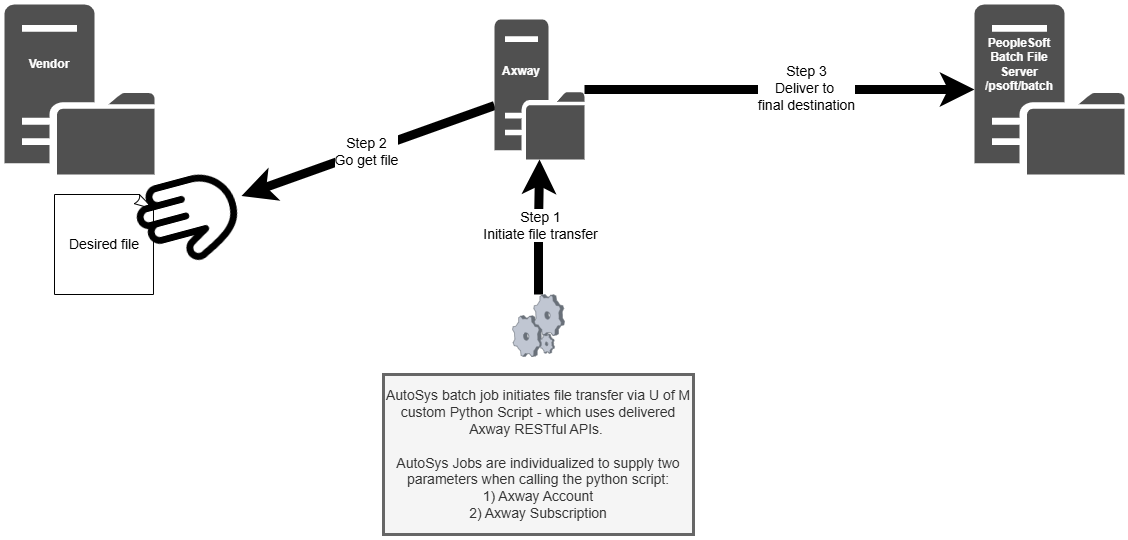Understanding Axway Data#
With your Read-Only access to the Axway Admin website, you will have access to two pages, User Accounts & File Tracking. You can only view data on either page which belongs to an Axway User Account that is set up as belonging to a business unit to which you have been granted access.
Most of Axway file transfer traffic is initiated by an Autosys batch job to kick off a file transfer. Please read this article before proceeding below. Pay special attention to the section with header Anatomy of the AutoSys Job to execute a Transfer.
Anatomy of a File Transfer#
The diagram above shows the general case of a file transfer - move a file from one place to another - based on setup in Axway created when your team worked with JST to get the file transfer set up. Each file transfer that has been setup in Axway, first belongs to one User Account. Within the User Account, there is a list of Transfer Sites and Subscriptions which define a "file transfer." Transfer Sites contain information about an endpoint: IP address or hostname to login to a server, credentials, file download or upload location on the remote server, and more. A subscription defines which Transfer Site to use to pull down a file into Axway and which Transfer Site(s) to use to push files downloaded out to to the final location.
Below are overviews and information on the setup embedded within a User Account. Please see this article which can be used to help you know where to go to look up each piece of a file transfer.
User Accounts#

The User Accounts page allows you to access & review setup associated with any account that belongs to a business unit for which you have been granted access.
Things you cannot see:
- Passwords
- SSH or PGP Keys
Settings#
When you click to open a particular account, you are brought to the Settings tab of the User Account pages:
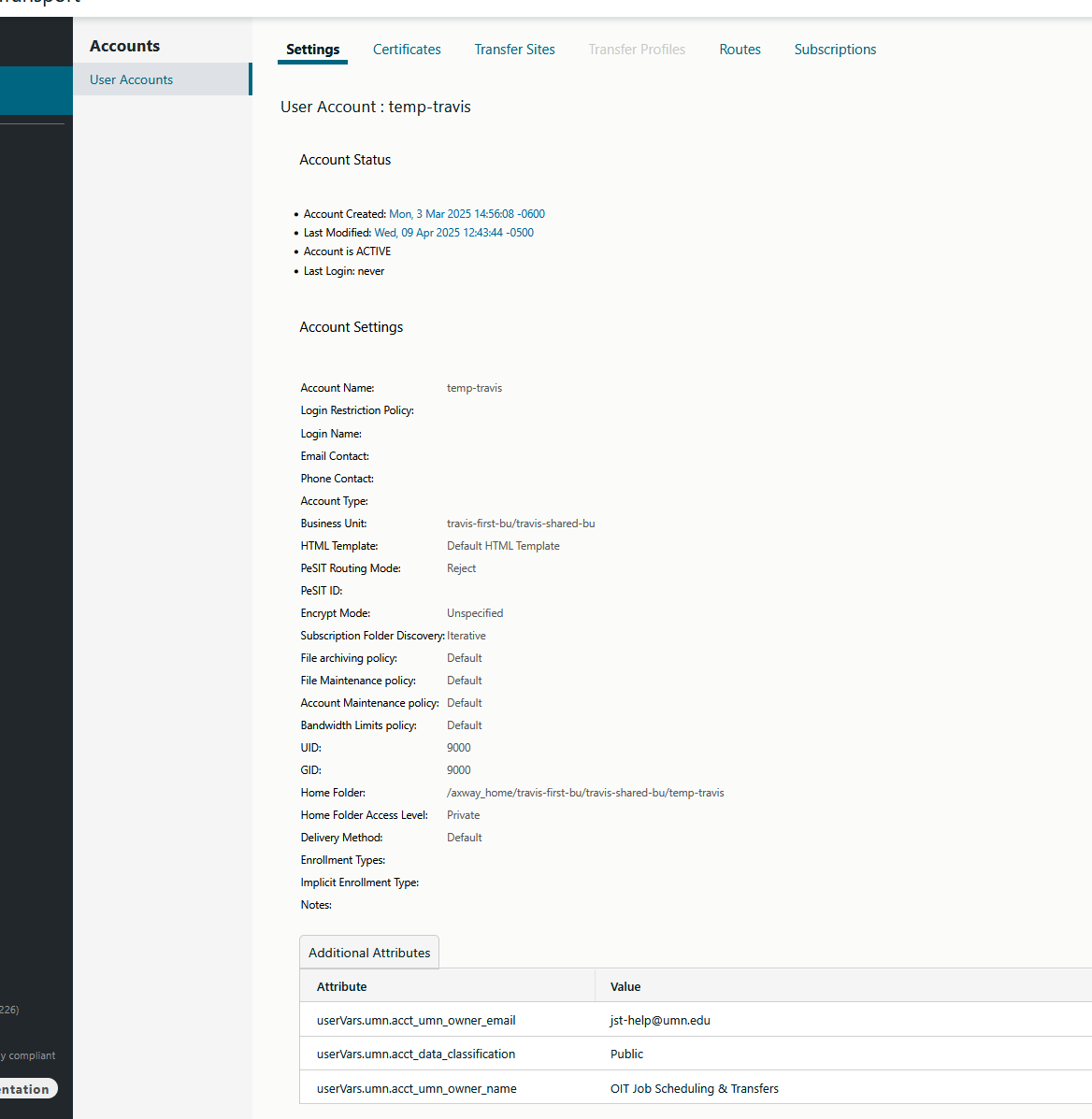
This page stores high-level information about the Axway User Account. Notable fields are: Additional Attributes and Business Unit.
Transfer Sites#

Transfer sites basically define a remote location that can be used in a Subscription to download (receive) or upload (send) a file. The Transfer Sites page holds information on what do do to get/put the file & what post-transmission actions to be taken on this remote server when used.
This tab shows a list of Transfer Sites setup under this account. When you select one to review, the page looks like this (split over three images because of length):
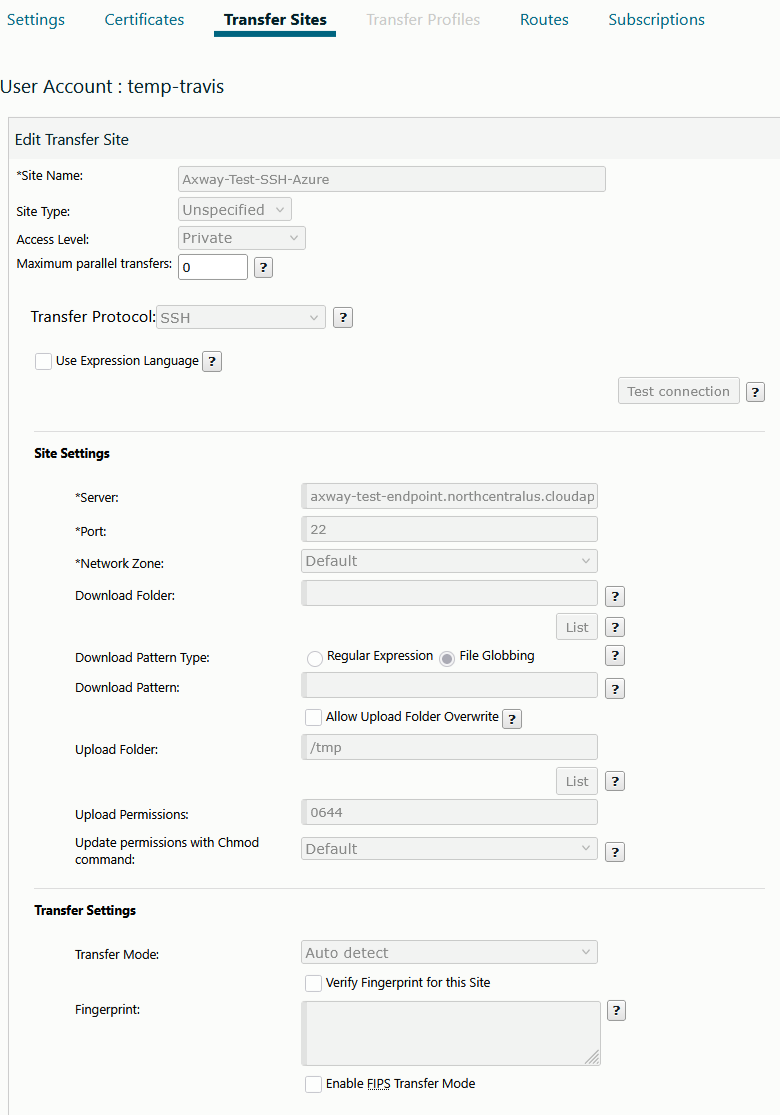
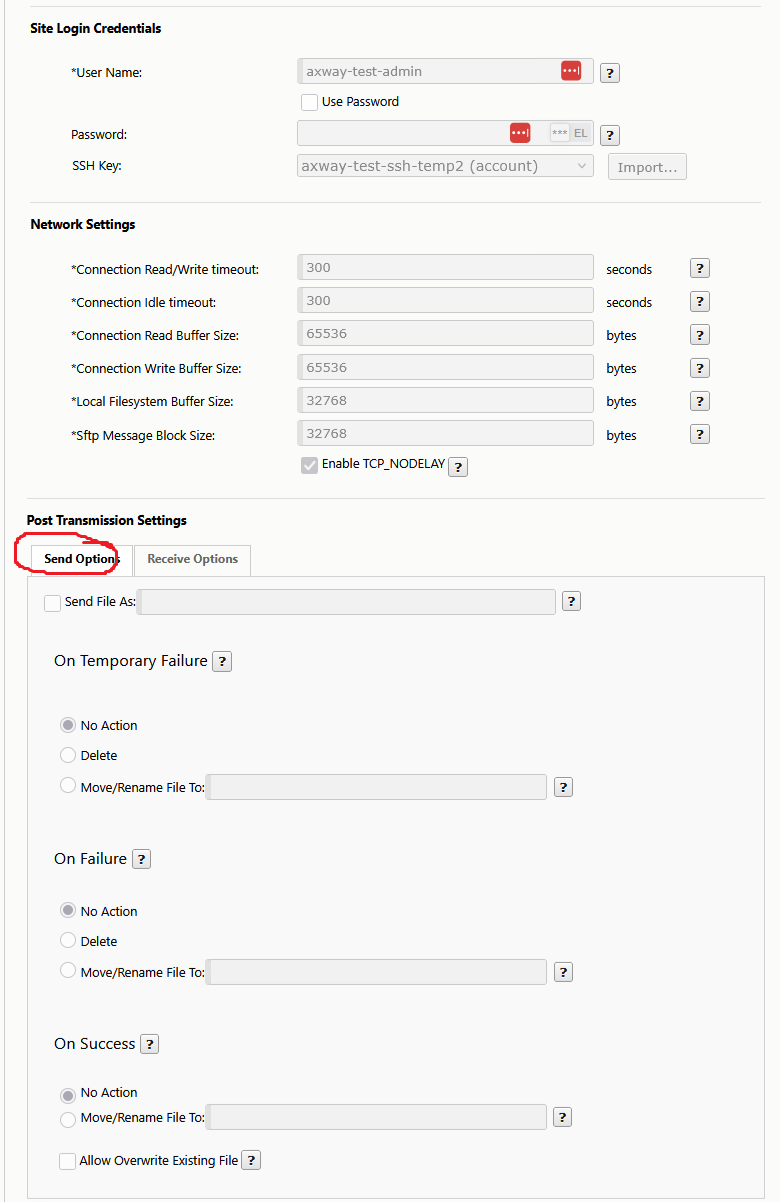

Subscriptions#
Below are screenshots of the subscription page - broken into three images because of length. Subscriptions define which Transfer Site is used to pull in a file, and which Transfer Site(s) are used to push the file out.
If a file needs to be encrypted on its way out or decrypted on its way in, that is defined here.


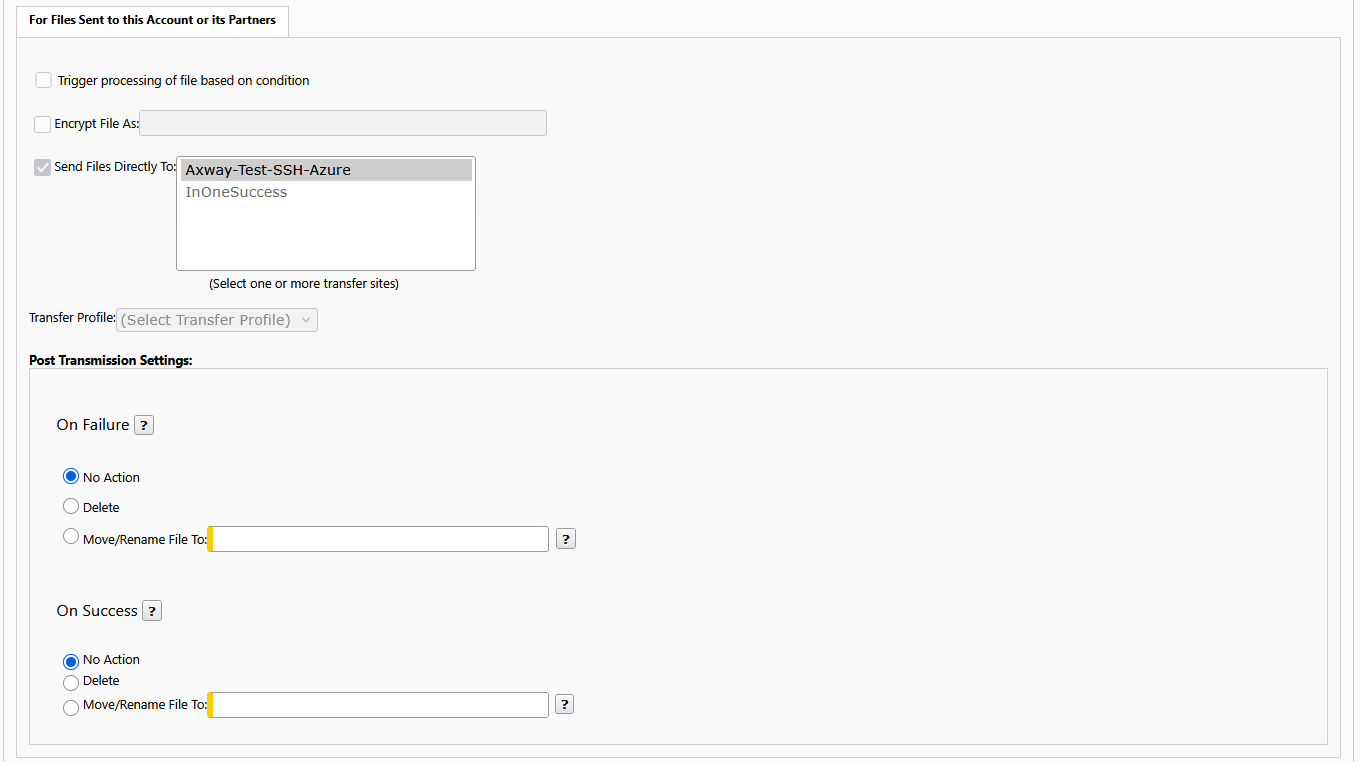
File Tracking#
![]()
File Tracking stores information about all files moving in and out of Axway for two months. You are not able to actually review the physical file or file data, even if it is still sitting on the Axway server.
Basic Overview#
![]()
The view above is the default view when entering the File Tracking page. The icon to the left of each row of detail indicates status. A green-check means success. More details on status icons can be read here.
In general, the details of a file transfer are considered in reference to Axway itself. For example, in the screenshot above, you see two lines for the file transfer. One line has a DIRECTION of Inbound and the other Outbound. Inbound means it was pulled into Axway - Outbound means back out of Axway.
If you click on the Status icon or the hyperlink in the FILE column, you will get a pop-up window with more details on that particular file transfer.
Change Columns#
We recommend using the Change Columns option to include the Site Name & Remote Folder, and Local Filename if not already selected.
![]()
Advanced Search#
If you expand the Show Advanced Search options by clicking the plus symbol in the upper-left side of the page, you will get much more search options.
Most commonly, this is used to search by Site (aka Transfer Site) or by File name.
![]()
Export Log#
You can click the Export Log button on the page to download the File Tracking data into a CSV file.
